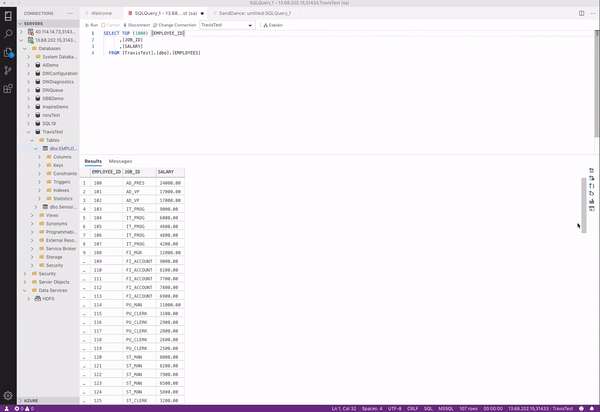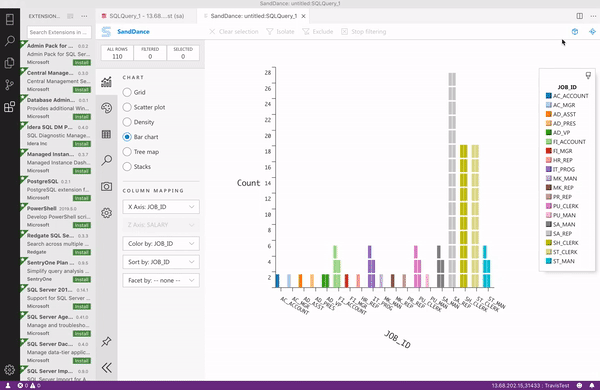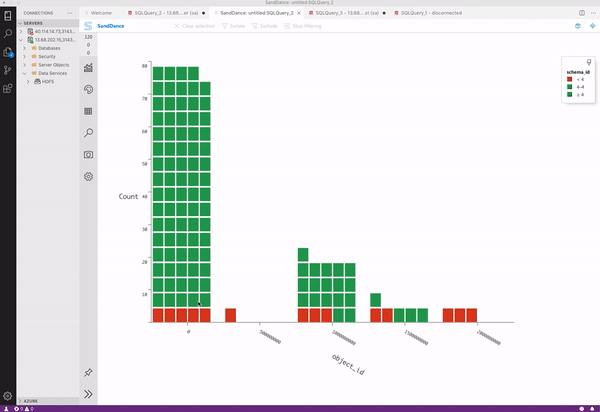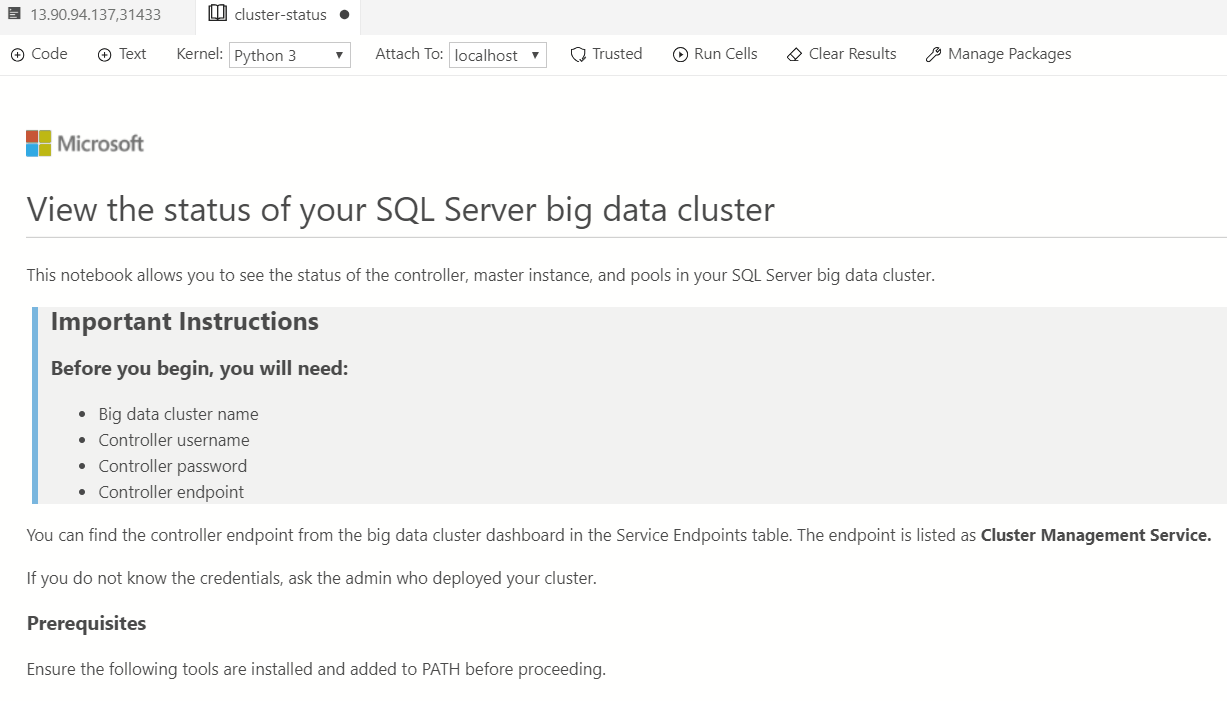The August release of Azure Data Studio is now available
Today we’re announcing the August release of Azure Data Studio is now available.
Download Azure Data Studio and review the release notes to get started.
Please note: After downloading Azure Data Studio, click Yes to enabling preview features so that you can use the extensions.
Azure Data Studio is a multi-database, cross-platform desktop environment for data professionals using the family of on-premises and cloud data platforms on Windows, MacOS, and Linux. To learn more, please visit our GitHub.
The key highlights to cover this month include:
- SandDance integration—A new way to interact with data
- Notebook improvements
- SQL Server Dacpac extension can support Azure Active Directory
- SQL Server 2019 extension
- Visual Studio Code merge 1.37
- Bug fixes
For a complete list of updates, please refer to the release notes.
SandDance integration—A new way to interact with data
To enhance customers’ data visualization and exploration experience within Azure Data Studio, we’re pleased to announce the new feature, visualizer. This feature is currently powered by SandDance, a data visualization tool developed by Microsoft Research.
Feature highlights
Smart chart detection:
SandDance 1.30 is now supporting the smart chart detection feature. This feature will recommend a suitable default chart configuration including chart type, aces, and color based on the data set.

3D visualizations:
SandDance supports three-dimension visualization that brings your data set to life.

Data sorting:
SandDance supports data sorting. Customers can select, isolate, and exclude data within SandDance without writing a single line of code. This allows you to expedite your data visualization and modification experience.

How can I start using it?
To start using this feature in Azure Data Studio, you will need to:
- Download the extension
- Connect to SQL Server instance
- Run a query
- Click the visualizer button in the results grid.
To learn more about using this extension, please read our SandDance documentation. We would like to acknowledge our Garage interns: Rachel Kim, Candice Ye, Rebecca Wang, Charmaine Chan, and Ian Yu, who have worked on this integration and improved experiences within SandDance this summer.
Notebook improvements
SQL Notebooks continue to be adopted by more and more users for demos, troubleshooting, education, and documentation. As we continue to bring in new features in Notebooks, we have been focusing on quality and performance to make sure notebooks are a first-class experience for our users.
Add code or text cell in-line

Improvements
- Ability to right-click SQL results grid to save your results as CSV, JSON, etc.
- Improvements to notebook loading performance for loading JSON faster
- View the full list of improvements in GitHub
If you have not tried SQL Notebooks yet, you can get started by following along with our SQL Notebooks documentation.
SQL Server Dacpac extension now supports Azure Active Directory
The SQL Server Dacpac extension, known as the data-tier application wizard from SQL Server Management Studio (SSMS), is powered by DacFx in the backend. In this release, we added support for Azure Active Directory (AAD) authentication in the SQL Server Dacpac extension, which was previously enabled in the last DacFx release. This capability will also soon be available in our schema compare extension.
Try out the SQL Server Dacpac extension by downloading the extension from our extensions marketplace.
Visual Studio Code April release merge 1.37
As part of our monthly Visual Studio Code merges, we’ve updated from Visual Studio Code 1.35 to 1.37.
This includes the following changes:
- Full product icon refresh
- Preserve case in find and replace
- Better default shell selector
- Launch terminals with clean environments
To see the full list of changes, you can check the Visual Studio Code monthly release notes:
Bug fixes
If you would like to help continuing to make Azure Data Studio a great product, please share any feedback or report issues through our GitHub issues page. Our engineering team regularly reviews the untriaged issues and assigns issues into different monthly milestones so that you know we are working on it. Your votes on issues help us prioritize.
A full list of bug fixes for the August release can be found here.
Contact us
If you have any feature requests or issues, please submit them to our GitHub issues page. For any questions, please feel free to comment below or tweet us.



